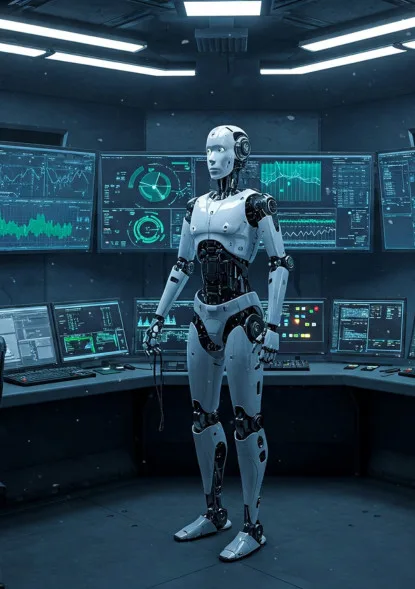In modern control rooms, operators face increasing complexity: massive volumes of data, diverse sources, multiple alerts, and critical situations. Making the right decision at the right time in such a high-pressure environment is a major challenge.
Artificial intelligence, among its many applications, can act as a true decision support tool. It serves as a co-pilot, capable of analyzing, correlating, prioritizing, and even recommending actions.
This AI-driven decision support is gradually being integrated into monitoring environments, bringing speed, clarity, and deeper analysis.
Supervision centers are the nerve centers of industrial, urban, energy infrastructures, or network operations centers (NOC). They monitor, alert, and arbitrate, sometimes within minutes. Over recent years, the information flows they must handle have exploded, rising from a few dozen or hundreds of data points to often thousands or even millions. This surge is largely due to the proliferation of data capture means: physical sensors, Internet of Things devices, intelligent video systems, and automated logs.
This situation creates a problem: human real-time analysis capacity is too limited. Cross-referencing an anomaly on an automated system with a SCADA alert, a voltage drop, and a thermal image becomes a complex exercise, especially under pressure. This is precisely why a reliable, fast, and understandable decision support system becomes essential.
But this need is not limited to emergencies. In daily infrastructure management, operators constantly make high-impact decisions: scheduling maintenance, optimizing energy consumption, and more. In all these cases, having a system that suggests relevant options or intelligently prioritizes alerts saves time, improves accuracy, and provides peace of mind.
Integrating AI into control rooms is not about replacing operators or their judgment but about providing better-informed levers for action. AI acts as a digital assistant able to correlate subtle signals and offer contextualized interpretations of events.
Here are some examples:
These use cases rely on machine learning algorithms trained on large historical datasets to recognize patterns, anticipate deviations, or classify events by severity. This allows supervision to evolve from purely reactive or preventive approaches to proactive and even predictive management.
Among machine learning techniques, some algorithms stand out for their ease of use and transparency. Decision trees are a prime example, often used in straightforward AI projects or systems where reasoning transparency is critical.
A decision tree works on a binary principle: it breaks down a problem into a series of conditional rules : if this, then that – until reaching a terminal node where a decision is made. For instance: “If temperature is above 80 degrees Celsius and pressure is above 5 bars, then the alert is critical.”
In supervision, decision trees can be used to:
While not the most robust or powerful algorithm, decision trees are valuable for their ability to clearly explain decisions, an essential trait in environments where every choice must be justified. They also require low computational resources, making them compatible with embedded systems or local architectures.
Other machine learning techniques build on decision trees, such as Random Forests or XGBoost, to improve performance while maintaining interpretability. In all cases, decision trees represent a relevant starting point for building decision support systems.
Implementing AI-based decision support in a control room goes beyond training a model. It requires rigorous work on multiple fronts:
AI-driven decision support is becoming a foundational element of modern control rooms. It enhances human judgment, helps foresee critical events, and turns complexity into clear, actionable insight.
Simple models like decision trees, drawn from machine learning, find their place in these settings for their interpretability and rule-structuring capabilities. Although not the most powerful on their own, they serve as useful entry points, educational tools, or building blocks in more complex systems.
The current challenge is to fully integrate AI into supervision practices with rigor and transparency. Doing so enables strategic decisions and provides a real operational advantage in terms of performance, safety, and efficiency.

Copyright © 2025. MOTILDE. All rights reserved.